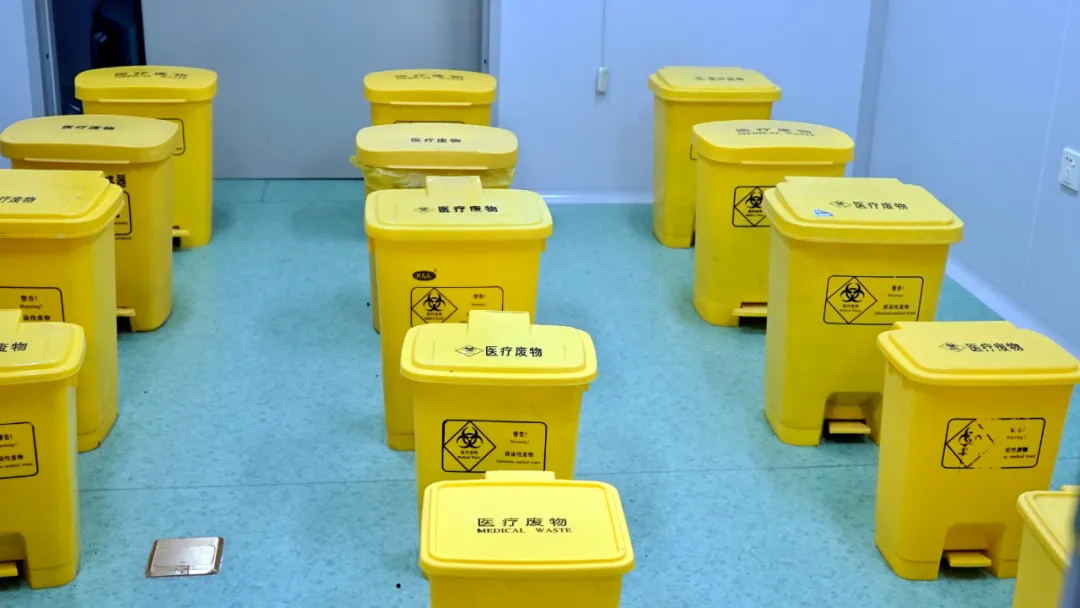
Hyper Hospital 大医院
2021.03.21 - 2021.03.27
Beijing, China
The project "Hyper hospital”, organized by VISART/VIS Arts Center and curated by the artist Dai Ying, brings together fourteen artists: Chi Shilin, Jiang Zhongxia, Yang Jian, Zhang Yunfeng, Wang Enlai, Sun Yu, Zhang Yongji, Qi Le, Qi Yao, Da Xin, Xiao Xun, and Lu Ming, Sun Yizhou, and Liang Hao, who participated in live performances on the opening day.
As the initiator of the project, Dai Ying altered the basic rules of residency programs and exhibitions, allowing artists to create freely without the constraints of production and exhibition goals.
Interestingly, when absolute freedom and autonomy were returned to the artists, they naturally engaged in deep reflection and hesitation, revealing underlying profound issues. Once outside their studios, artists inevitably face the formulaic industry chain; trapped between creating artworks for exhibition plans and making works solely for exhibitions, more and more creators find themselves in an endless loop of the latter.
While creating for exhibitions and projects and catering to market demands might ensure artists' livelihoods, being led by the pace makes the inner taste of creation a personal and often isolating experience.
Hyper Hospital is Dai Ying’s first attempt in her comprehensive thinking, like a light stone thrown into a lake. For her, what the project ultimately presents or how much impact it has is not important; it is the act of breaking that is crucial.
In the week following discharge, many artists were still caught between the dimensions of hospital life and real life, sparking numerous reflections on creation and the current state of reality, mostly based on the project's anti-system exploration.
The event started on the evening of March 20, with artists moving into the abandoned Chinese hospital. Initially, due to fear of the unfamiliar environment, everyone was cautious. However, the next day, Yang Jian from out of town completely changed this state. He fearlessly explored and played with the medical equipment and tools, turning the hospital into a place of joy.
In this space filled with unrelated items, the artists collectively experienced a purposeless yet joyful life.
The artists revealed in joy, yet could not escape the agony of creation. This abandoned hospital, once clearly functional, now lost its purpose, creating a contradictory atmosphere that sparked their creative instincts.
The artists initiated a card game, breaking the curse of creation, with art pieces replacing gaming chips. Each person had three hours to create a work, and the top four winners could choose any piece from the losers.
In this rhythm, everyone finally let go of their concerns about whether and how to create, fully immersing themselves in the process and producing a variety of interesting works. Even those uninterested in the card game joined in the creative process, experiencing the joy of having their final works selected.
Dai Ying offers a broader perspective and contemplation on the evolution of artistic movements. She notes that many artistic movements were vibrant at their inception but tended to become stylized and homogeneous in thinking once incorporated into the art system. Conceptual art, for instance, was groundbreaking in its early days, but now artists often use these languages more as a result of ingrained formulaic thinking—a set routine. Dai Ying questions how we can temporarily break all these fixed settings and return art creation to a state of freshness. These thoughts drive her reflections and actions within the project.
One female artist, Qi Le, was impressed by the behaviors of her male counterparts and commented on the universal desire to conquer spaces. She explained that it’s human nature to erect monuments, establish landmarks, and release one's scent upon arriving at a new place. She noted that they were not afraid of radiation or electric shocks, effectively turning the hospital inside and out into their playground, much like an amusement park that could be freely enjoyed day and night.
The most fascinating phenomenon in the hospital was how emotions often spread among everyone, reaching a high point after a certain threshold. For example, one day after dinner, someone inadvertently whistled, followed by another trying to tap out some sounds with their hands, and then others picked up plastic sheets, beer bottles, or nearby items, creating makeshift instruments for an impromptu concert. Graffiti also originated in similar circumstances; once someone started to doodle on the walls, many couldn't help but join in with pens in hand.
Although this project somewhat resembles an artist residency, project founder Dai Ying deliberately designed and emphasized that during this period, artists are not required to produce works, nor is there an exhibition component typically associated with such events. Instead, only half a day on the seventh day was set aside for public visits.
This created a light-hearted and playful atmosphere throughout the project, but behind this lies Dai Ying's critical reflection on the current art environment. As an artist herself, Dai Ying personally understands and is familiar with the challenges young artists face in today’s increasingly mature art industry chain. She believes that artists are often trapped by rigid thinking imposed by the many layers of the current art system. By initiating this unconventional space project with seemingly no requirements, she aimed to challenge many established rules within the industry.
















